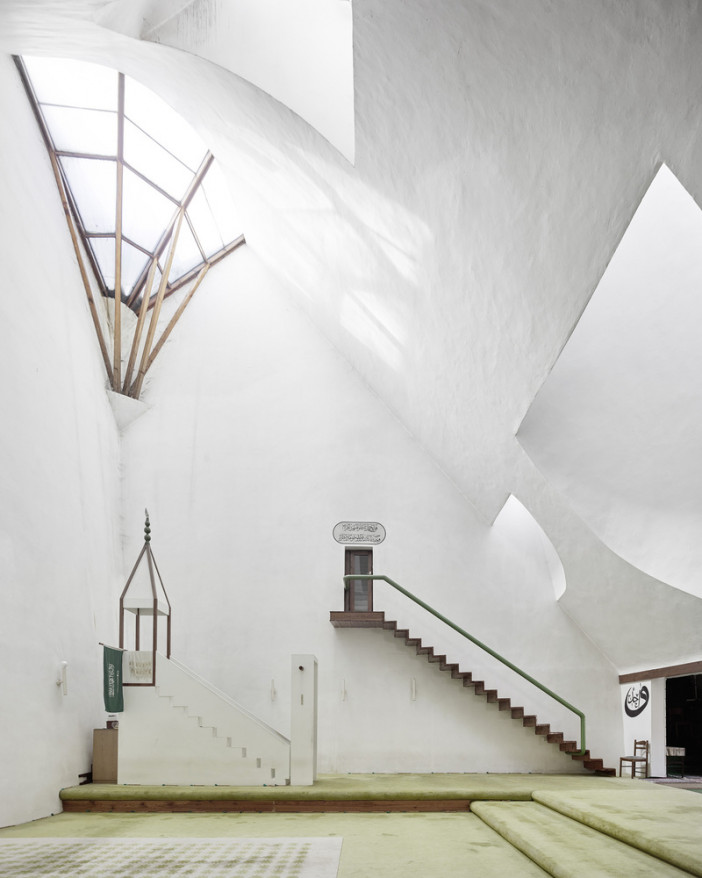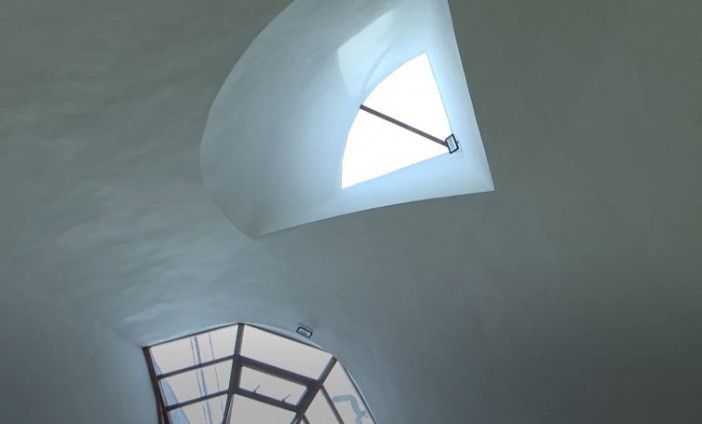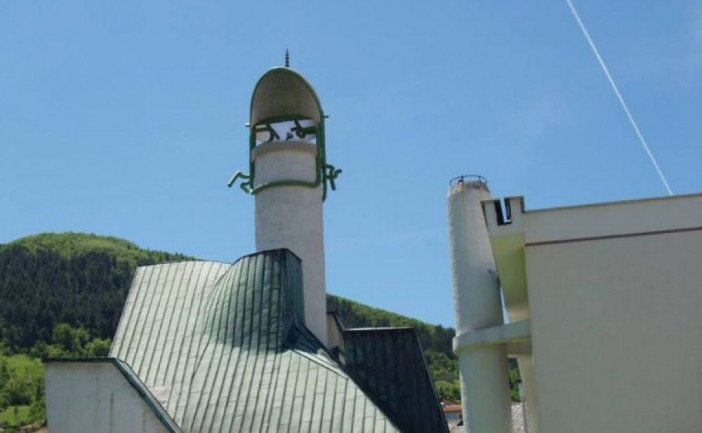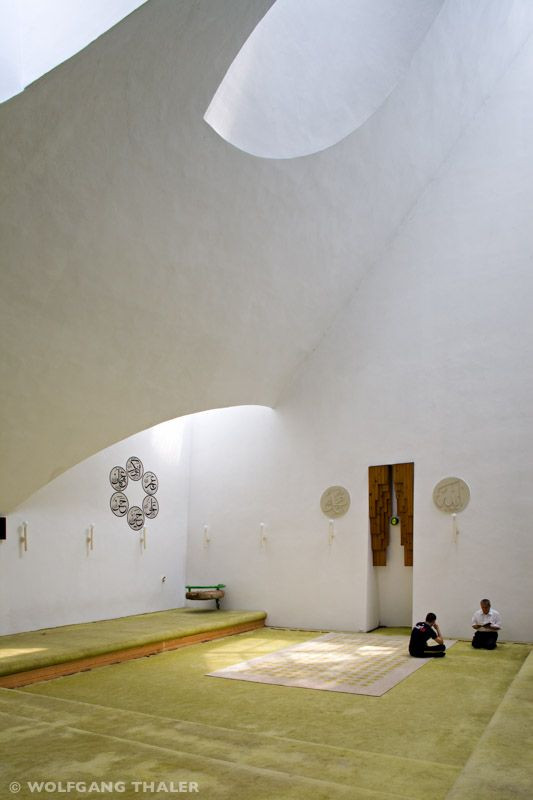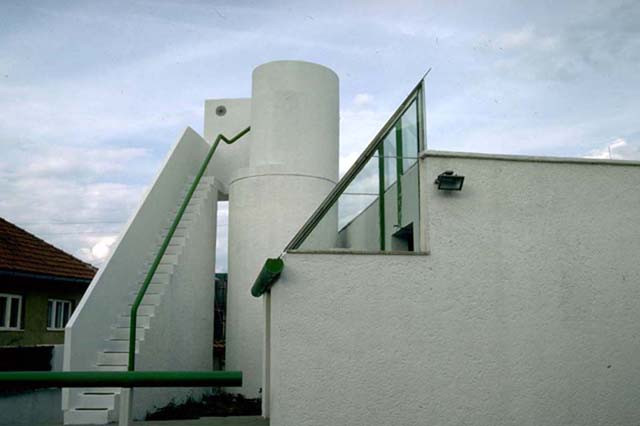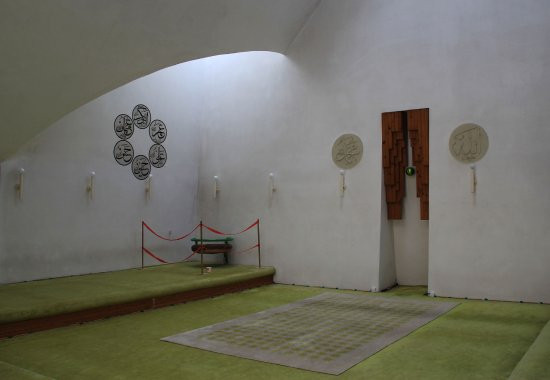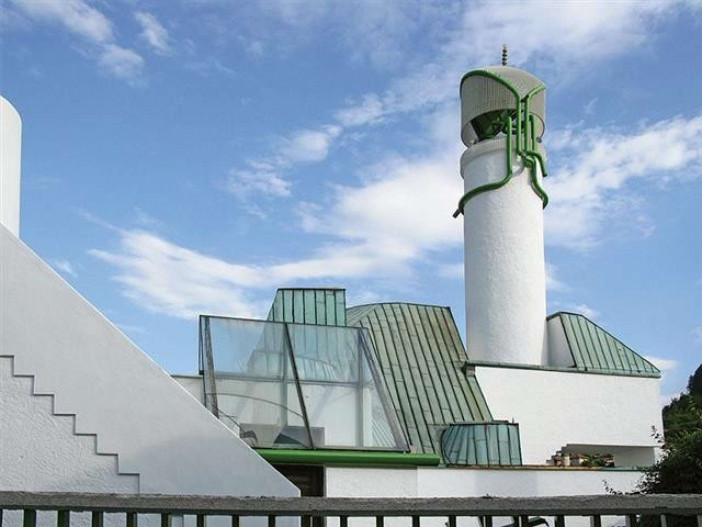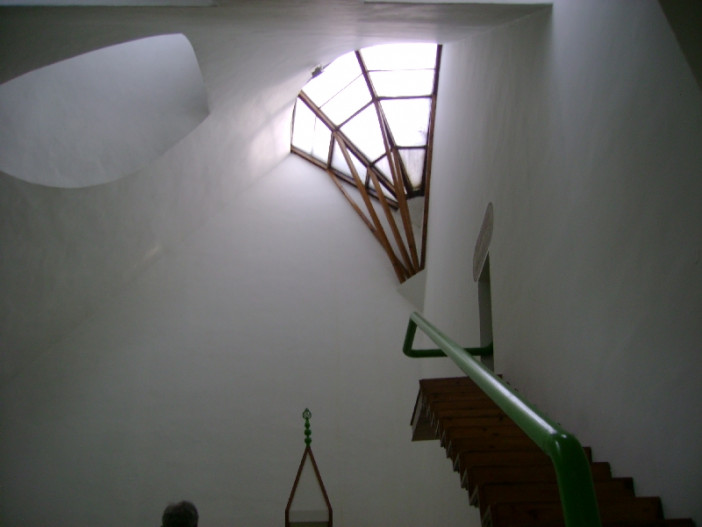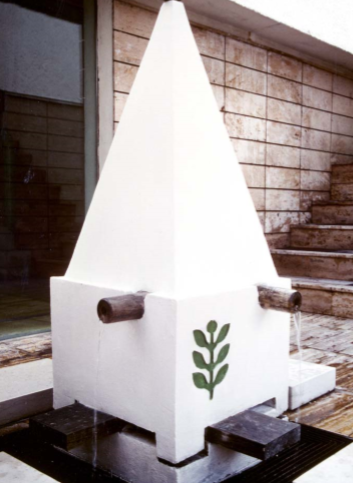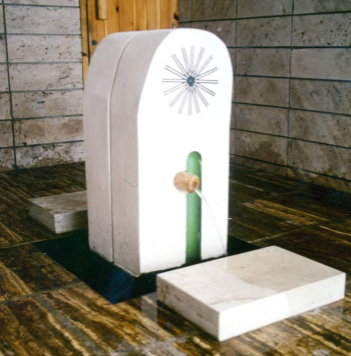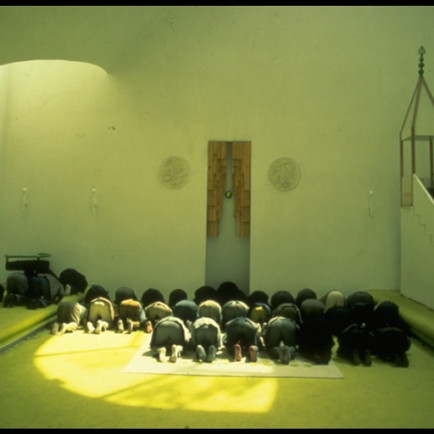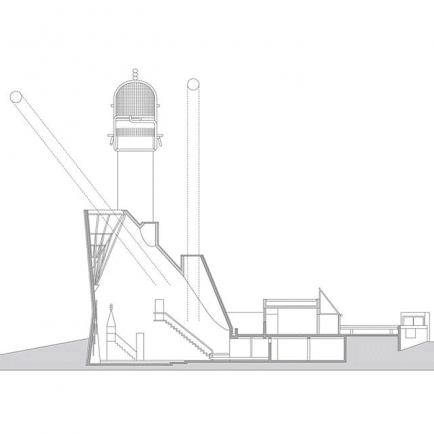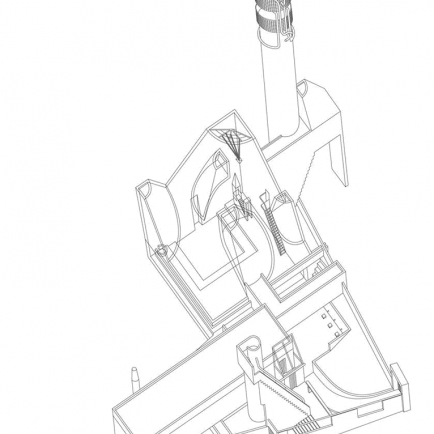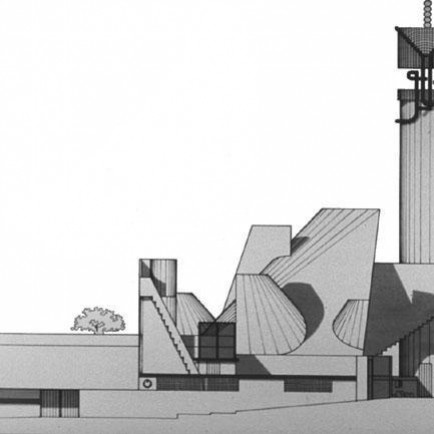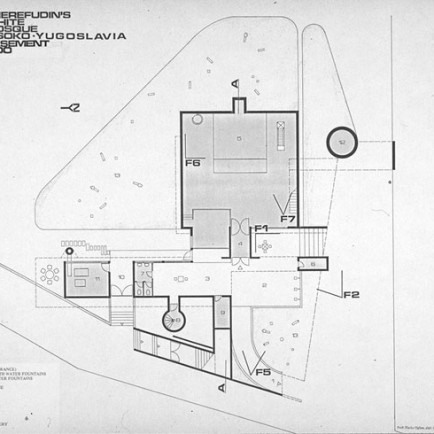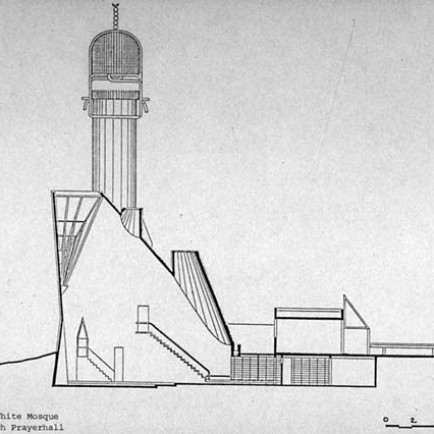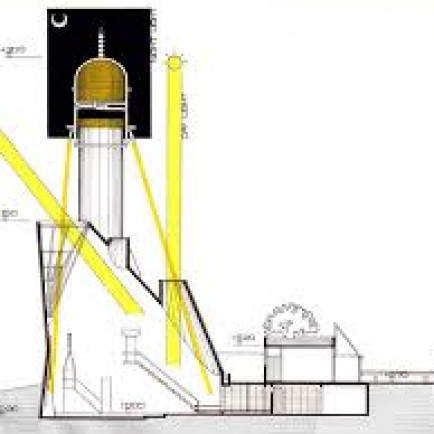Sherefudin’s White Mosque
History
The mosque comprises five
functional areas:
· Access
space and first courtyard
· Mosque
proper
· Annex
building
· Minarets
The central space of the mosque is
designed both for praying and other
religious activities such as lectures and discussions. The indoor area for
praying is an annex building. The annex consists of a small auditorium and an office. Traditionally, in
Bosnian mosques, graveyards act as
a buffer between mosque and other buildings,
but in this case the graveyard is isolated. Architect Zlatko Ugljen used the
traditional layout of Bosnian mosques which consist of a courtyard leading to a
square praying area, over which rises a cupola. The difference is in an unusual
arrangement of this concept, where large glass panels
make this mosque even better integrated with the rest of the building. The five
roof windows symbolize five core principles of Islam,
but also shafts light on key areas of the interior. The southeast facade of the
cupola is faced toward the Ka'ba. Fountains, pulpit and other decorative elements are
simple, just like the calligraphy in the
interior which is simple and readable. Both the interior and exterior of the
mosque are painted white, while the beige colour
was used for the floor, and green for a few metallic
elements, like frames and tubes.
Building materials were
plastered concrete for walls and cupola, white mortar for the inner walls, a combination
of pine wood and white mortar for surfaces of
many interior elements, local travertine tiles for exterior paths and
courtyard paving,
and iron tubes for minarets, while the floors
inside the mosque are covered with green carpet.
Description
Architect: Zlatko
Ugljen. with D. Malkin (Engineer)
Craftsman: Ismet Imamovic
Contractor: Zvijezda.
The award that came from the Aga Khan Development Network listed
this mosque as one of the most valuable modern mosques built in Bosnia and
Herzegovina. The network stated that:
The mosque serves as a religious and intellectual centre for its
community. Its geometrically simple plan encloses a complex, slope-ceilinged,
skylit volume, pure, abstract, sparsely ornamented and painted white. The
archetypal Bosnian mosque has a simple square plan crowned by a cupola and
entered by means of a small porch. The White Mosque's plan conforms to the
archetype, but its roof is a freely deformed quarter of a cupola, pierced by
five skylights, themselves composed of segments of quarter cupolas. The effect
is one of confrontation between the elementary plan and the sophisticated
hierarchy of roof cones. The principal symbolic elements, mihrab, minbar,
minaret and fountains, have a fresh folk art character subtly enhanced by the
avant-garde geometries of their setting.
Zlatko Ugljen has also been commended for "masterfully
assimilat[ing] modern influences, especially Le Corbusier's Ronchamp Cathedral,
and traditional Ottoman forms and elements".
Details
Location
Visoko, Bosnia, and Herzegovina
Architect Name
Year of Build
1980
Area
Entire building 435 sqm, mosque 169 sqm.
Drawings
Map
History
The mosque comprises five
functional areas:
· Access
space and first courtyard
· Mosque
proper
· Annex
building
· Minarets
The central space of the mosque is
designed both for praying and other
religious activities such as lectures and discussions. The indoor area for
praying is an annex building. The annex consists of a small auditorium and an office. Traditionally, in
Bosnian mosques, graveyards act as
a buffer between mosque and other buildings,
but in this case the graveyard is isolated. Architect Zlatko Ugljen used the
traditional layout of Bosnian mosques which consist of a courtyard leading to a
square praying area, over which rises a cupola. The difference is in an unusual
arrangement of this concept, where large glass panels
make this mosque even better integrated with the rest of the building. The five
roof windows symbolize five core principles of Islam,
but also shafts light on key areas of the interior. The southeast facade of the
cupola is faced toward the Ka'ba. Fountains, pulpit and other decorative elements are
simple, just like the calligraphy in the
interior which is simple and readable. Both the interior and exterior of the
mosque are painted white, while the beige colour
was used for the floor, and green for a few metallic
elements, like frames and tubes.
Building materials were
plastered concrete for walls and cupola, white mortar for the inner walls, a combination
of pine wood and white mortar for surfaces of
many interior elements, local travertine tiles for exterior paths and
courtyard paving,
and iron tubes for minarets, while the floors
inside the mosque are covered with green carpet.
Description
Architect: Zlatko
Ugljen. with D. Malkin (Engineer)
Craftsman: Ismet Imamovic
Contractor: Zvijezda.
The award that came from the Aga Khan Development Network listed
this mosque as one of the most valuable modern mosques built in Bosnia and
Herzegovina. The network stated that:
The mosque serves as a religious and intellectual centre for its
community. Its geometrically simple plan encloses a complex, slope-ceilinged,
skylit volume, pure, abstract, sparsely ornamented and painted white. The
archetypal Bosnian mosque has a simple square plan crowned by a cupola and
entered by means of a small porch. The White Mosque's plan conforms to the
archetype, but its roof is a freely deformed quarter of a cupola, pierced by
five skylights, themselves composed of segments of quarter cupolas. The effect
is one of confrontation between the elementary plan and the sophisticated
hierarchy of roof cones. The principal symbolic elements, mihrab, minbar,
minaret and fountains, have a fresh folk art character subtly enhanced by the
avant-garde geometries of their setting.
Zlatko Ugljen has also been commended for "masterfully
assimilat[ing] modern influences, especially Le Corbusier's Ronchamp Cathedral,
and traditional Ottoman forms and elements".



